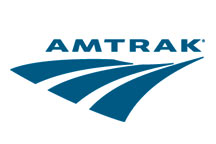Right about the time I stopped blogging last year, the Illinois Department of Transportation (IDOT) released its “Feasibility Report of Proposed Amtrak Service” between Chicago and Peoria. So I’m five months late with my analysis. But then, IDOT was about three years late releasing the study.
All you need to read to know that this feasibility report is a sham is this paragraph from the introduction:
With the successful application by the State of Illinois for federal stimulus funding to upgrade the Chicago-St. Louis corridor (hereinafter referred to as “corridor”) to a maximum speed of 110 mph, the study request was modified to one route that would provide the Peoria area with connectivity to certain Amtrak corridor trains. After an initial review of the various routes, it became apparent that instead of a complete route feasibility study between Chicago and Peoria, either a rail or bus shuttle between the Peoria area and Normal, Illinois, utilizing the new multi-modal station currently under construction at Normal, would be the most expedient way to meet the State’s goal. A decision was made by IDOT that no through-train frequencies between Peoria and Chicago were to be considered.
And there you have it. The feasibility study — first requested in March 2007 — was aborted before it ever began.
 You see, the original request to study direct service between Peoria and Chicago. There was no request for this to be a high-speed train or to connect to a high-speed corridor. But then the request was inexplicably modified. Instead of simply looking at direct service, the request was changed to look at service that would connect with the new “high speed” corridor between Chicago and St. Louis that passes through Normal.
You see, the original request to study direct service between Peoria and Chicago. There was no request for this to be a high-speed train or to connect to a high-speed corridor. But then the request was inexplicably modified. Instead of simply looking at direct service, the request was changed to look at service that would connect with the new “high speed” corridor between Chicago and St. Louis that passes through Normal.
Well, that screwed up everything. Now the only routes they can consider are the shortest routes to the “high speed” corridor, and how to get the train up to 110 mph once it gets there. Based on this new criteria, IDOT decided they weren’t even going to consider direct service to Chicago from the State’s third-largest metropolitan statistical area.
Instead, they spent four and a half years researching the best rail and bus routes from here to Normal. It doesn’t take a member of Mensa to figure out that rail service between Peoria and Normal is idiotic. But they did the math anyway and determined that it would cost $134 million in infrastructure and capital costs, plus an operating subsidy of $2,211,000 per year. Bus service? No infrastructure or capital costs, and an annual operating subsidy of $273,000.
So, thanks to a mysteriously modified request, we have a “feasibility report” that says, “drive to Normal if you want to go to Chicago.” In other words: status quo. No rail service for you.
The first question I want answered is, who modified the request? Was it IDOT? The Tri-County Regional Planning Commission? Ray LaHood? Who? And my next question is, of course, why?
Why was a study of a direct route to Chicago aborted? Included at the end of the report (starting on page 19) is what I can only assume is their “initial review of various routes.” And “Route B” looks very attractive, and feasible. It would travel south from Chicago through Joliet and Pontiac to Chenoa, then head west to East Peoria over the Toledo, Peoria and Western Railroad (TP&W), which they say has “relatively light” traffic — only three trains a day on average.
Furthermore, the cost to upgrade the TP&W infrastructure so that passenger trains could travel at 79 mph (not “high speed”) is only $52 million — less than half the $106 million they estimate it would cost to improve the tracks between Peoria and Normal to the same speed. Heck, even if they upgraded Route B to 110 mph (“high speed”), it would still cost $6 million less than upgrading tracks between Peoria and Normal to 79 mph speeds. And since Route B would be a through-train from Peoria all the way to Chicago, it would have higher ridership and thus higher revenue, which would reduce its annual operating subsidy.
But IDOT didn’t consider this option because, apparently, it wasn’t “the most expedient way to meet the State’s goal.” Why wasn’t it?
Who spiked the IDOT-Amtrak feasibility study and why? That’s the question that demands an answer.
